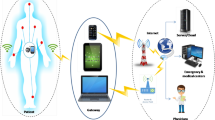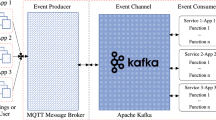Abstract
Compressive sensing-based data collecting is a promising technique, which can significantly reduce the communication costs in wireless sensor networks (WSNs). However, a recent study shows that it is vulnerable to controllable event triggering attack (CETA): after compromising a sensor and carefully manipulating the environmental elements around a target in the subtree rooted at the sensor, an attacker is able to infer sensitive parameters of the target. The existing countermeasure is purely based on cryptography and requires central control. In this paper, we propose a lightweight non-cryptography-based approach by termly modifying the structure of the data gathering tree. However, how to efficiently and effectively construct the tree is an open problem. To solve the problem, we create a novel topology-based coding scheme and a set of distributed algorithms to mitigate the CETA attack. By adopting this approach, the time for successfully launching a CETA attack is significantly increased. Extensive simulations and experiments show that our solution can efficiently and securely build different data gathering trees for consecutive sensing tasks.











Similar content being viewed by others
References
Anthopoulos L (2017) Smart utopia vs smart reality: Learning by experience from 10 smart city cases. Cities 63:128–148
Silva BN, Khan M, Han K (2018) Towards sustainable smart cities: a review of trends, architectures, components, and open challenges in smart cities. Sustain Cities Soc 38:697–713
Zhang K, Ni J, Yang K, Liang X, Ren J, Shen XS (2017) Security and privacy in smart city applications: Challenges and solutions. IEEE Commun Mag 55(1):122–129
Luo C, Wu F, Sun J, Chen CW (2009) Compressive data gathering for large-scale wireless sensor networks. In: Proceedings of the 15th annual international conference on mobile computing and networking, MobiCom ’09, pp 145–156, New York, NY, USA. Association for Computing Machinery
Hu P, Xing K, Cheng X, Wei H, Zhu H (2014) Information leaks out: attacks and countermeasures on compressive data gathering in wireless sensor networks. In: IEEE INFOCOM 2014 - IEEE conference on computer communications, pp 1258–1266
Zeng K, Yang Z, Lou W (2009) Location-aided opportunistic forwarding in multirate and multihop wireless networks. IEEE Trans Veh Technol 58(6):3032–3040
Liu X, Zhu Y, Kong L, Liu C, Gu Y, Vasilakos AV, Wu M (2015) CDC: Compressive data collection for wireless sensor networks. IEEE Trans Parallel Distrib Syst 26(8):2188–2197
Bodik P, Wei H, Guestrin C, Madden S, Paskin M, Thibaux R (2004) Intel lab dataset. http://db.csail.mit.edu/labdata/labdata.html
Duarte-Carvajalino JM, Sapiro G (2009) Learning to sense sparse signals: Simultaneous sensing matrix and sparsifying dictionary optimization. IEEE Trans Image Process 18(7):1395–1408
Donoho DL, Huo X (2001) Uncertainty principles and ideal atomic decomposition. IEEE Trans Inf Theory 47(7):2845–2862
Candes EJ, Tao T (2006) Near-optimal signal recovery from random projections: Universal encoding strategies? IEEE Trans Inf Theory 52(12):5406–5425
Bianchi T, Bioglio V, Magli E (2014) On the security of random linear measurements. In: 2014 IEEE international conference on acoustics, speech and signal processing (ICASSP), pp 3992–3996
Cambareri V, Mangia M, Pareschi F, Rovatti R, Setti G (2015) Low-complexity multiclass encryption by compressed sensing. IEEE Trans Signal Process 63(9):2183–2195
Zhang P, Wang S, Guo K, Wang J (2018) A secure data collection scheme based on compressive sensing in wireless sensor networks. Ad Hoc Netw 70:73–84
Liu Z, Han YL, Yang XY (2019) A compressive sensing–based adaptable secure data collection scheme for distributed wireless sensor networks. Int J Distrib Sens N 15(6):1550147719856516
Wang M, Xiao D, Ao Z (2019) A novel privacy-preserving data gathering scheme in wsn based on compressive sensing and embedding. In: ICC 2019 - 2019 IEEE international conference on communications (ICC), pp 1–6
Author information
Authors and Affiliations
Corresponding author
Additional information
Publisher’s note
Springer Nature remains neutral with regard to jurisdictional claims in published maps and institutional affiliations.
Rights and permissions
About this article
Cite this article
Hu, H., Chang, W. Non-cryptography countermeasure against controllable event triggering attack in WSNs. Peer-to-Peer Netw. Appl. 14, 1071–1087 (2021). https://doi.org/10.1007/s12083-020-01062-6
Received:
Accepted:
Published:
Issue Date:
DOI: https://doi.org/10.1007/s12083-020-01062-6




